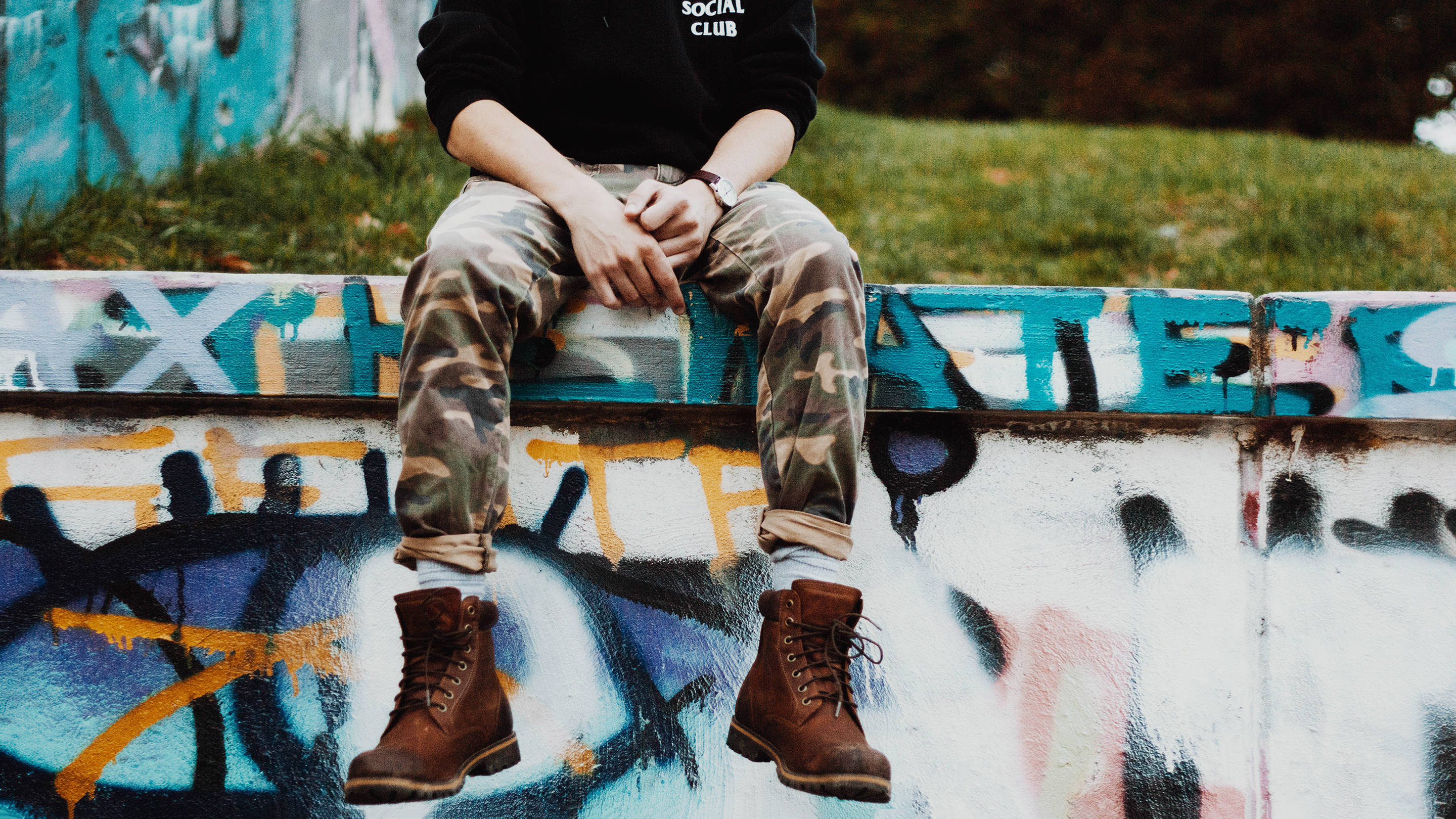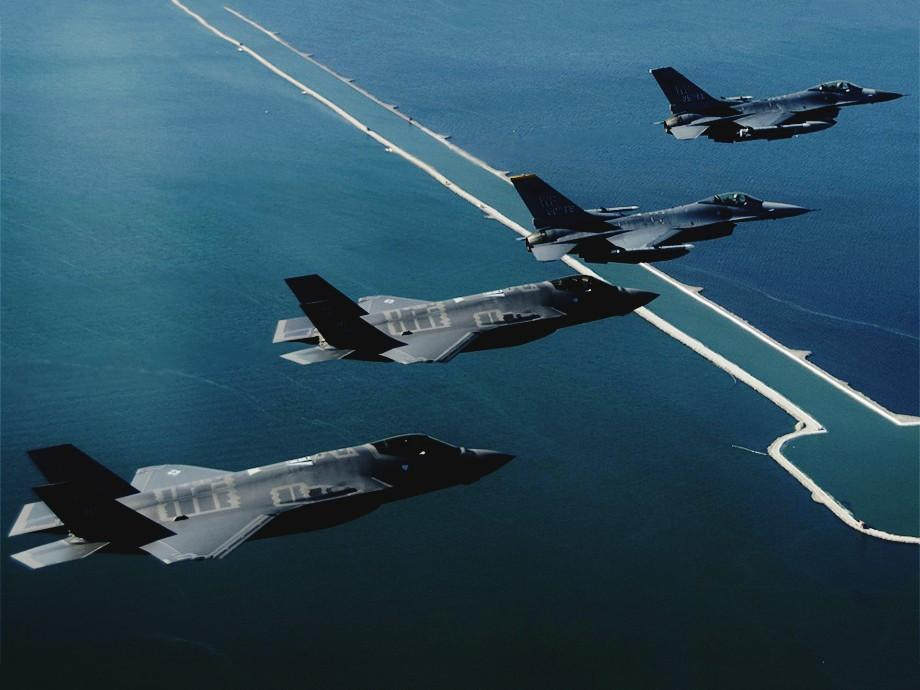
From the Punisher to 50 Cent, How the War on Terror Made Tactical Gear Stylish
“What the fuck is this?” my friend asked. A former Army ranger, he was dumbfounded by images circulating on Instagram of runway models in France sporting military style tactical gear in patterns like plaid. They were part of a preview of Japanese fashion designer Junya Watanabe’s Spring/Summer 2019 men’s collection. “How did this happen?” my friend continued.
“I think I know,” I replied. I pointed out that we’ve seen tactical gear treated as fashion accessories for quite a while now. Veterans have a word for military style gear that exists more to make its user feel cool rather than to actually help them achieve any goal: “tacticool.”
It’s not an accident that these accessories have caught on with civilians and veterans alike. For instance, bags and backpacks with MOLLE (MOdular Lightweight Load-carrying Equipment) straps actually can be very practical. As a journalist and hiker, I’ve used MOLLE gear on plenty of occasions while traveling, easily clipping water bottles, cameras and other items to my bags to keep them accessible. And I often find I can never have too many pockets to put things.
But a side effect of the public’s fascination with tactical equipment has been the emergence of subculture that almost fetishizes the tactical and a cottage industry that caters to it. You can buy tactical baby carriers, tactical grilling kits, tactical Christmas stockings and, perhaps most ridiculously, the tactical tie. Before former EPA chief Scott Pruitt resigned earlier this year, his office spent nearly $3,000 on “tactical pants” and “tactical polos.” You can apparently never be too tactical.
It’s possible that special operations troops fighting in Vietnam may have inadvertently laid the groundwork for this phenomenon. The first Americans on the ground were advisers. They typically tried to wear uniforms similar to the Vietnamese fighters they were advising. Since these weren’t issued they often sought out local tailors to make them custom uniforms. The most popular camouflage pattern was the distinctive locally developed “tiger stripes.”
As more troops arrived, locally purchased, custom-tailored tiger stripe fatigues became the visible trademark of elite forces like Green Berets, Navy SEALs and other special operations units. Special operations troops often had relaxed uniform regulations. In particular, it wasn’t uncommon to see SEALs mix their tiger stripe fatigues with jeans, sunglasses and hair that was wildly outside of regulation on top of even personally purchasing their own weapons.
They were given wide latitude to dress how they chose and organize themselves how they wanted as long as they got the job done. They were the rock stars of the military effort, with regular troops either contemptuous of their lack of uniformity or jealous of their freedom. The mystique around special operations soon captured the public’s imagination, and the romantic image of ragtag teams of elite soldiers who played by their own rules soon dominated pulp fiction.
Icons like Rambo, the A-Team, the Punisher, Magnum P.I. were all products of this fascination. These men were depicted not merely as rugged and capable, but as hip and stylish.
However, the war in Vietnam was becoming deeply divisive at home. As the military scaled back its involvement, President Richard Nixon ended the draft—thus solidifying the military as the all-volunteer organization it is today. As the war in Vietnam began to come to an end, a handful of American veterans began looking for work as mercenaries in places like Africa and Central America. In 1975, retired Green Beret Robert K. Brown launched Soldier of Fortune magazine. It told stories of guns and adventure—and even carried ads for clients looking for mercenaries. It became a cultural sensation, enthusiastically read by men who wanted to live vicariously through their adventures as often as it was by actual guns-for-hire.
By the 1980s, the public’s fascination with these shadow wars was heavily influencing pop culture. Icons like Rambo, the A-Team, the Punisher, Magnum P.I. were all products of this fascination. These men were depicted not merely as rugged and capable, but as hip and stylish. Some special operations veterans began cashing in on the phenomenon, penning memoirs and fictional thrillers based on their experiences with some, like former SEAL Team Six leader Dick Marcinko, becoming celebrities in their own right.
Swift American military victories in Panama and Operation Desert Storm set the stage for the 1990s as the Cold War came to an end. Elite warriors had solidified themselves as pop-culture staples. Soon they were the stars of video games, allowing players to take control of the action. Games like Tom Clancy’s Rainbow Six and Ghost Recon allowed players to select their weapons and equipment before going into battle.
But for most soldiers, military life wasn’t quite so exciting—and their gear wasn’t as cool. Outside of the special operations community, they merely worked with the standard issue equipment with little choice in the matter.
During the 1990s, an infantryman in Hawaii named Logan Coffee set up a workshop in his barracks with industrial sewing machines to modify standard issue equipment to be more comfortable and practical. It wasn’t long before soldiers across the base began bringing him gear looking for modifications. After leaving the Army in 1998, he founded Tactical Tailor, producing custom tactical gear for military and law enforcement. Coffee would die in a tragic car accident 10 years later, but the company he built would remain a well-known name in what was soon to become a crowded market.
When Al Qaeda struck the Twin Towers a few years later, American special operations troops were the first into Afghanistan. Like in Vietnam, they were given wide latitude in how they fought and dressed. Many grew thick beards to match the Afghan militia fighters they were teaming up with to fight the Taliban. They rode horses and drove pickup trucks with mounted machine guns. They were once again capturing the public’s imagination. Then America invaded Iraq, and a new group of fighters would capture the public imagination—the private security contractor.
After nearly dying in a drive-by shooting, rapper 50 Cent began wearing a bulletproof vest—and it didn’t take long before other rappers followed suit. Tactical style gear was becoming club attire.

The Strange Saga of the World's Most Expensive Weapon
The F-35 jet can't dogfight and is riddled with glitches, yet we're still spending a trillion on it
Companies like Blackwater became increasingly visible during the war, and so did their employees. The wide range of companies varied in terms of quality and discipline. Many hated being called “mercenaries”—others cheekily embraced the label. As civilians, they rarely had uniforms and often had completely personalized equipment. They aggressively purchased all manner of gear and weaponry.
For tactical equipment companies, the Iraq War was quickly becoming a gold rush. In 2004, a soldier infamously asked then-Defense Secretary Donald Rumsfeld why troops had to use scrap metal to armor their Humvees. Concerns that troops weren’t getting the best gear led to many service members and their families shelling out thousands of dollars of their own money for personally purchased equipment.
In 2006, the Army banned privately purchased body armor. The ban specifically name-checked Pinnacle Armor’s line of Dragon Skin body armor, noting that while the company’s advertising implies that Dragon Skin "is superior in performance" to standard issue armor, "the Army has been unable to determine the veracity of these claims." The Army asserted that these companies were scamming troops.
"We're very concerned that people are spending their hard-earned money on something that doesn't provide the level of protection that the Army requires people to wear,” the Army’s director of materiel Col. Thomas Spoehr told the Associated Press after the ban. “So they're, frankly, wasting their money on substandard stuff." However, a year later NBC reported that several generals and those tasked with protecting them were still using Dragon Skin in spite of the ban, and Navy SEAL Chris Kyle wrote about wearing Dragon Skin armor in his memoir American Sniper.
But while the military cracked down on armor, troops were still purchasing other gear in droves often with the military’s blessing. Troops were personally purchasing backpacks, pouches, holsters, rifle scopes, knives and all manner of gear—often from stores on military bases. Pinnacle Armor filed for bankruptcy in 2010, but Dragon Skin is still sold by the Missoula-based North American Development Group to military and law enforcement customers.
Off the battlefield, civilians around the world had tactical fever too. After nearly dying in a drive-by shooting, rapper 50 Cent began wearing a bulletproof vest—and it didn’t take long before other rappers followed suit. Tactical style gear was becoming club attire.
Giving cops military style clothes and equipment makes them think like and act like warriors instead of police.
At the same time, video games were increasingly embracing the “tacticool.” Franchises like Call of Duty and Army of Two were ditching the attempted realism of 1990s tactical shooters, replacing them with action movie heroics—but keeping the fascination with equipment. Civilian gun enthusiasts, paintballers and Airsoft players began buying up the latest gear to emulate the tough guys they saw on TV, video games and in the news.
"Tactical jackets are really in right now, but the actual gear, the ballistic vests are actually what's in. Not knock-off garments or anything like that," Chris Story, an employee of New York-based Uncle Sam's Army Navy Outfitters told U.S. News in 2010. "I think modern military fashion is prevalent because it's in the news ... Iraq and Afghanistan were a huge motivating factor."
In 2014, protests in Ferguson, Missouri and the subsequent heavily armed police response led to congressional hearings on the relative ease with which law enforcement can acquire military equipment meant for war. During these hearings, Republican Sen. Rand Paul noted that “in FEMA’s Authorized Equipment List, there is actually written descriptions for how the equipment should be used, and it says it is specifically not supposed to be used for riot suppression.”
In a policy paper published earlier this year entitled “Equip Police More Like Batman and Less Like G.I. Joe,” Iraq War veteran and former police officer Arthur Rizer argued that giving cops military style clothes and equipment makes them think like and act like warriors instead of police. Some veterans have become increasingly outspoken about what they see as an infatuation with military equipment by people who they argue are trying to look tough rather than actually use it practically—whether that be police departments, militia groups or former White House officials.
After years of troops deploying to Afghanistan, Iraq and many other countries, war has become part of the backdrop of American life. Today, less than one percent of Americans serve in the military. The elimination of the draft and shift toward an all-volunteer military has in many ways kept Americans insulated from the realities of both war and military life. Nevertheless, Americans are fascinated with war, weapons and the military. So tacticool is probably here to stay.

How Star Wars Changed the Way Our Military Fights
For military strategists, the Star Wars galaxy isn't so far far away






